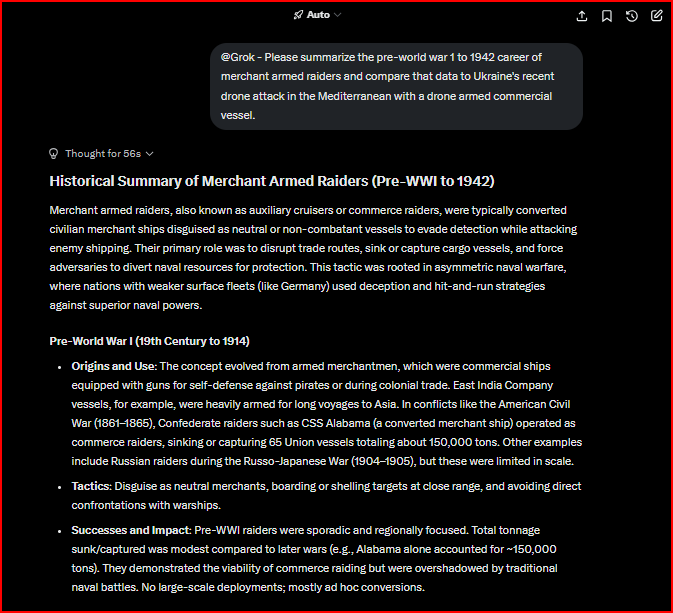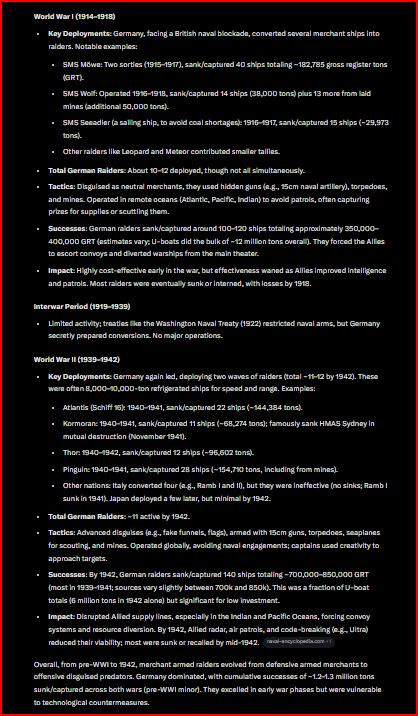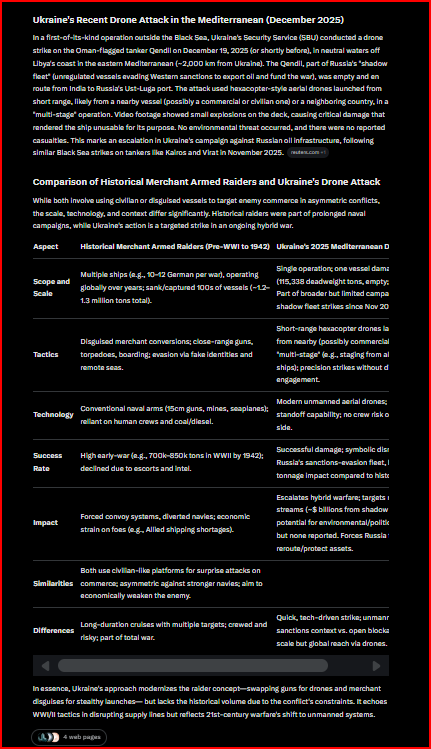@DrydockDreams has put up another Coral Sea post modeling ships & US Navy CAG William Ault plus his disappearance returning from the strike against IJN CarDiv 5.
This thread goes into what the role of preventable HF communications failure played in that
This thread goes into what the role of preventable HF communications failure played in that
https://twitter.com/DrydockDreams/status/1391025862229721090
...disappearance.
To do so I will be using screen captures from Squadron Leader A. L. Hall, RAAF, presentation "farewell to communication failures" reprinted in the Aug 1944 CIC magazine
To do so I will be using screen captures from Squadron Leader A. L. Hall, RAAF, presentation "farewell to communication failures" reprinted in the Aug 1944 CIC magazine
https://twitter.com/TrentTelenko/status/1390767932863549441
This is a clip showing the beginning of S/F Hall's manuscript.
WW2 wartime military periodicals often have 'retro' or 'era specific' high tech buried in the articles that modern eyes will not understand.
3/
WW2 wartime military periodicals often have 'retro' or 'era specific' high tech buried in the articles that modern eyes will not understand.
3/

What that diamond & cross shape with chains between a plane, a ship and two ground antennas represents is a Rhombic antenna.
This antenna was invented by Bell Labs in the 1930's and was used extensively in WW2 era strategic HF coms & SIGINT.
See:
qrznow.com/the-mighty-rho…
4/
This antenna was invented by Bell Labs in the 1930's and was used extensively in WW2 era strategic HF coms & SIGINT.
See:
qrznow.com/the-mighty-rho…
4/

At the beginning of WW2 Australian government & military built a series of rhombic antenna point to point high frequency analog voice circuits (wireless telephone of W/T) to link Northern & Western Australia to the South East.
5/
5/
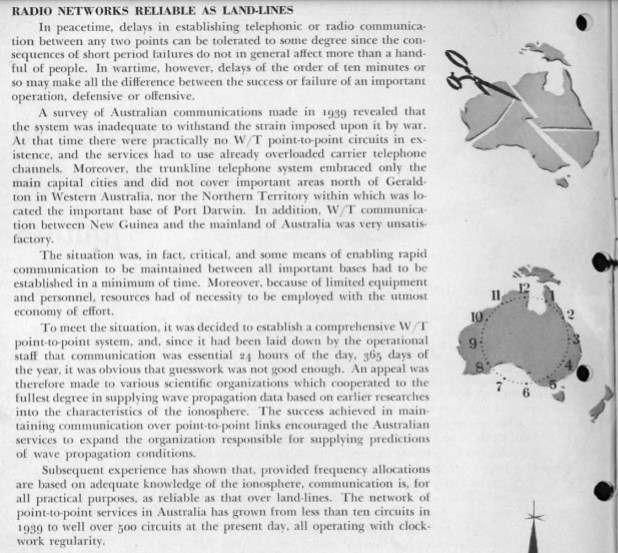
This system brought Australia face to face with the problems of what we now call "space weather" living in the bad radio neighborhood of the "Great South Pacific Radio Blob."
6/
https://twitter.com/TrentTelenko/status/1390767817490829322
6/
This radio system didn't pop into existence like Athena from Zeus' brow.
Australian Radio Research Board, established by J P V Madsen in 1928, worked together with the Australian civil service & got the American Carnegie Institution's Department of Terrestrial Magnetism to
7/
Australian Radio Research Board, established by J P V Madsen in 1928, worked together with the Australian civil service & got the American Carnegie Institution's Department of Terrestrial Magnetism to
7/

...put an ionosphere observatory in Watheroo, Australia.
The operation of Australia's HF wireless telephone system brought Australian RAB scientists face to face with the fact that the British military HF frequency prediction system pushed by Marconi scientist T L Eckersley
8/
The operation of Australia's HF wireless telephone system brought Australian RAB scientists face to face with the fact that the British military HF frequency prediction system pushed by Marconi scientist T L Eckersley
8/

...did not work as well as the the British civil radio predictions using the Appleton-Beynan periodic layer model.
E Appleton & T L Eckersley had been academic enemies of the worst sort since 1930. When the British ISIB was stood up in 1941 & copied by the USA. It used the
9/
E Appleton & T L Eckersley had been academic enemies of the worst sort since 1930. When the British ISIB was stood up in 1941 & copied by the USA. It used the
9/
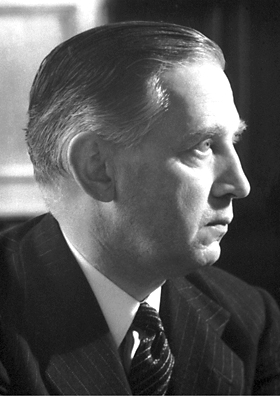
...rival Newbern Smith model instead.
In Australia, it was all "needs must as the devil drives" & the devil was the "Great South Pacific Radio Static Blob."
Just prior to Coral Sea, Gen. MacArthur called a scientific conference to standardize HF communications in the SWPA.
10/
In Australia, it was all "needs must as the devil drives" & the devil was the "Great South Pacific Radio Static Blob."
Just prior to Coral Sea, Gen. MacArthur called a scientific conference to standardize HF communications in the SWPA.
10/

This standard was implemented for Coral Sea and all SWPA air & sea search elements. They had no problems communicating with each other.
This was not the case for CAG William Ault and the air groups on Lexington & Yorktown.
11/
This was not the case for CAG William Ault and the air groups on Lexington & Yorktown.
11/
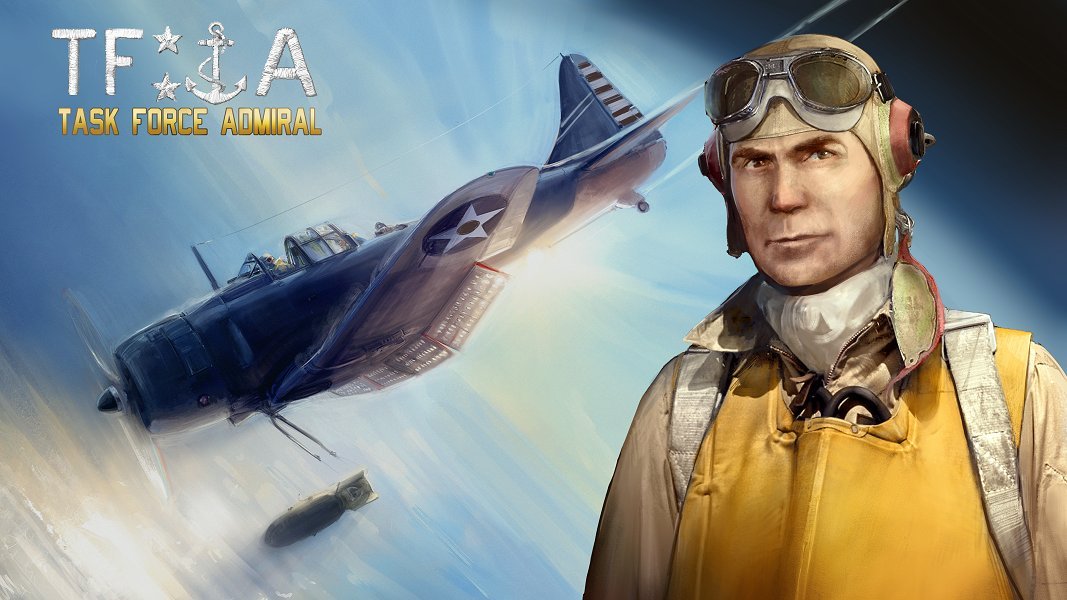
S/L Hall obliquely refers to this inability of the SWPA to communicate by radio to USN carriers during the Battle of Coral Sea in his manuscript.
The inability of the SWPA & SoPAC to effectively communicate endured until the latter was absorbed by the former in Aug 1944.
12/
The inability of the SWPA & SoPAC to effectively communicate endured until the latter was absorbed by the former in Aug 1944.
12/
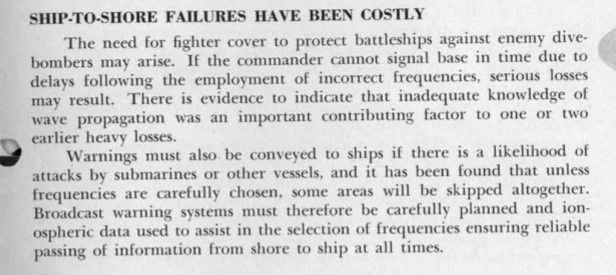
The inability of USN carrier groups in 3rd/5th Fleets to communicate to SWPA units lasted the entire war and played a major role in the Battle of Leyte Gulf.
The US Navy, or course, blamed General MacArthur for this.
13/
The US Navy, or course, blamed General MacArthur for this.
13/

S/L Hall's manuscript gives a very good idea of how CAG William Ault died.
Six Mhz was generally the best SWPA HF radio freq. during the daylight hours, but failed at dusk & dawn. But, you had to have planned alternate frequencies for where your plane was going & it's base.
14/

Six Mhz was generally the best SWPA HF radio freq. during the daylight hours, but failed at dusk & dawn. But, you had to have planned alternate frequencies for where your plane was going & it's base.
14/


CAG William Ault was not so blessed.
Being outside the ground wave, facing a weather front, Ault wound up in a high freq. "skip zone" where no communications would reach USN CV's.
Like Hudson A-16-198 in S/L Hall's manuscript, Ault got lost, ran out of fuel & crashed.
/End



Being outside the ground wave, facing a weather front, Ault wound up in a high freq. "skip zone" where no communications would reach USN CV's.
Like Hudson A-16-198 in S/L Hall's manuscript, Ault got lost, ran out of fuel & crashed.
/End




@threadreaderapp unroll
• • •
Missing some Tweet in this thread? You can try to
force a refresh


